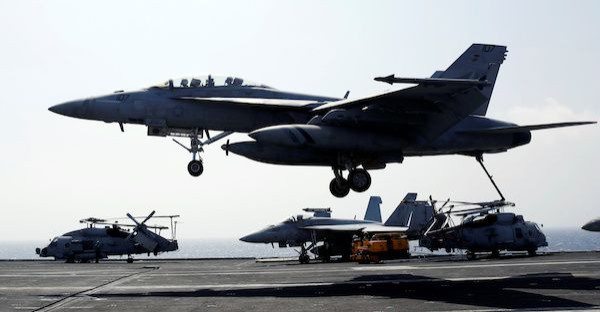Boeing Drone To Refuel US Navy Fighter Jets Midair

Boeing just unveiled an autonomous plane that can carry around 15,000 pounds of fuel for U.S. Navy fighter jets that need to replenish their juice midair. However, the U.S. Navy has yet to decide if it wants Boeing’s autonomous plane, or if it’s going for a different design from a different company.
Just this past Tuesday, Boeing showed off its design for an autonomous plane that can refuel fighter jets midair. The goal behind this autonomous flying vehicle is to extend the range of fast jet-powered Navy aircraft.
Boeing’s MQ-25 Stingray aerial tanker is designed to carry about 15,000 pounds of fuel, which can then be transferred to fighter jets in the air. The aircraft manufacturing company said that its flying tanker can extend the flying range of fighter jets with an additional 300 to 400 miles, GeekWire has learned.
“Boeing has been delivering carrier aircraft to the Navy for almost 90 years,” retired admiral Don “BD” Gaddis who leads Boeing’s refueling system program for Phantom Works technology organization said. “Our expertise gives us confidence in our approach. We will be ready for flight testing when the engineering and manufacturing development contract is awarded.”
Boeing’s autonomous plane is capable of refueling the F/A-18 Super Hornet, the Lockheed Martin F-35C fighters and the EA-18G Growler. The aerospace giant said its new aircraft system is “completing engine runs before heading to the flight ramp for deck handling and demonstrations next year.”
Because the new aircraft is going to be autonomous, human operators will have to direct Boeing’s drone to its rightful location via radio and satellite. The crew will be provided with a handheld controller that can remotely guide the aircraft from other planes.
The MQ-25 Stingray aerial tanker is Boeing’s response to the U.S. Navy’s request for proposals pertaining to unmanned technologies that would help refuel various combat planes. Lockheed Martin and General Atomics have also submitted their proposals. On the other hand, Northrop Grumman was given the chance to submit a bid but it backed out of the competition two months ago.
The Navy will be the one to decide on which machinery will be approved for use. Submissions are still open at present, but acceptance of proposals will end on Jan. 3. The U.S. Navy will announce the winning design in September 2018. The winning entry will then be carried on warships and catapulted into the air just like fighter jets.
The Pentagon has reportedly earmarked $2.16 billion for the Navy drone program through fiscal 2021. However, the total value of the contract is expected to be much larger, according to Daily Mail.
© Copyright IBTimes 2025. All rights reserved.




















